Stars live and die on epic time scales. Tens of millions of years, hundreds of millions of years, even billions of years or longer. Maybe the only thing that surpasses that epicness is when two dead stars join together and come back to life.
Continue reading “Bizarre Star Could be the Result of Two White Dwarfs Merging Together”Pulsar Seen Speeding Away From the Supernova That Created it

When a star exhausts its nuclear fuel towards the end of its lifespan, it undergoes gravitational collapse and sheds its outer layers. This results in a magnificent explosion known as a supernova, which can lead to the creation of a black hole, a pulsar or a white dwarf. And despite decades of observation and research, there is still much scientists don’t know about this phenomena.
Luckily, ongoing observations and improved instruments are leading to all kinds of discoveries that offer chances for new insights. For instance, a team of astronomers with the National Radio Astronomy Observatory (NRAO) and NASA recently observed a “cannonball” pulsar speeding away from the supernova that is believed to have created it. This find is already providing insights into how pulsars can pick up speed from a supernova.
Continue reading “Pulsar Seen Speeding Away From the Supernova That Created it”This Star Has Been Going Nova Every Year, for Millions of Years
A nova star is like a vampire that siphons gas from its binary partner. As it does so, the gas is compressed and heated, and eventually it explodes. The remnant gas shell from that explosion expands outward and is lit up by the stars at the center of it all. Most of these novae explode about once every 10 years.
But now astrophysicists have discovered one remnant so large that the star that created it must have been erupting yearly for millions of years.
Continue reading “This Star Has Been Going Nova Every Year, for Millions of Years”Astronomers are Continuing to Watch the Shockwaves Expand from Supernova SN1987A, as they Crash Into the Surrounding Interstellar Medium
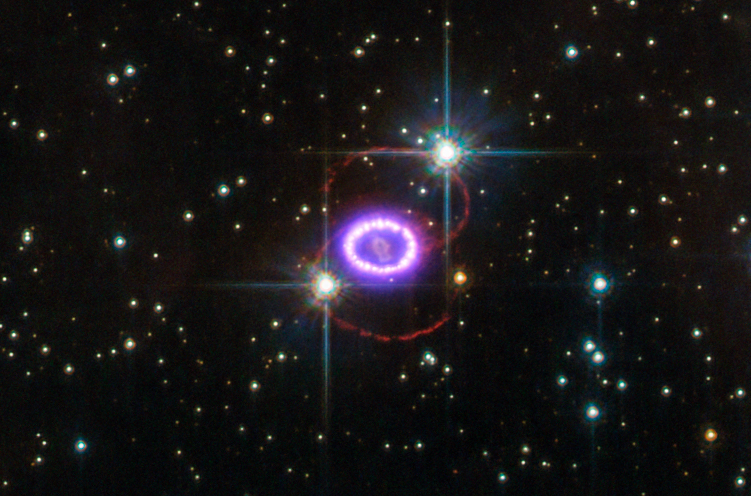
When stars reach the end of their life cycle, many will blow off their outer layers in an explosive process known as a supernova. While astronomers have learned much about this phenomena, thanks to sophisticated instruments that are able to study them in multiple wavelengths, there is still a great deal that we don’t know about supernovae and their remnants.
For example, there are still unresolved questions about the mechanisms that power the resulting shock waves from a supernova. However, an international team of researchers recently used data obtained by the Chandra X-Ray Observatory of a nearby supernova (SN1987A) and new simulations to measure the temperature of the atoms in the resulting shock wave.
Continue reading “Astronomers are Continuing to Watch the Shockwaves Expand from Supernova SN1987A, as they Crash Into the Surrounding Interstellar Medium”Astronomers See the Exact Moment a Supernova Turned into a Black Hole (or Neutron Star)
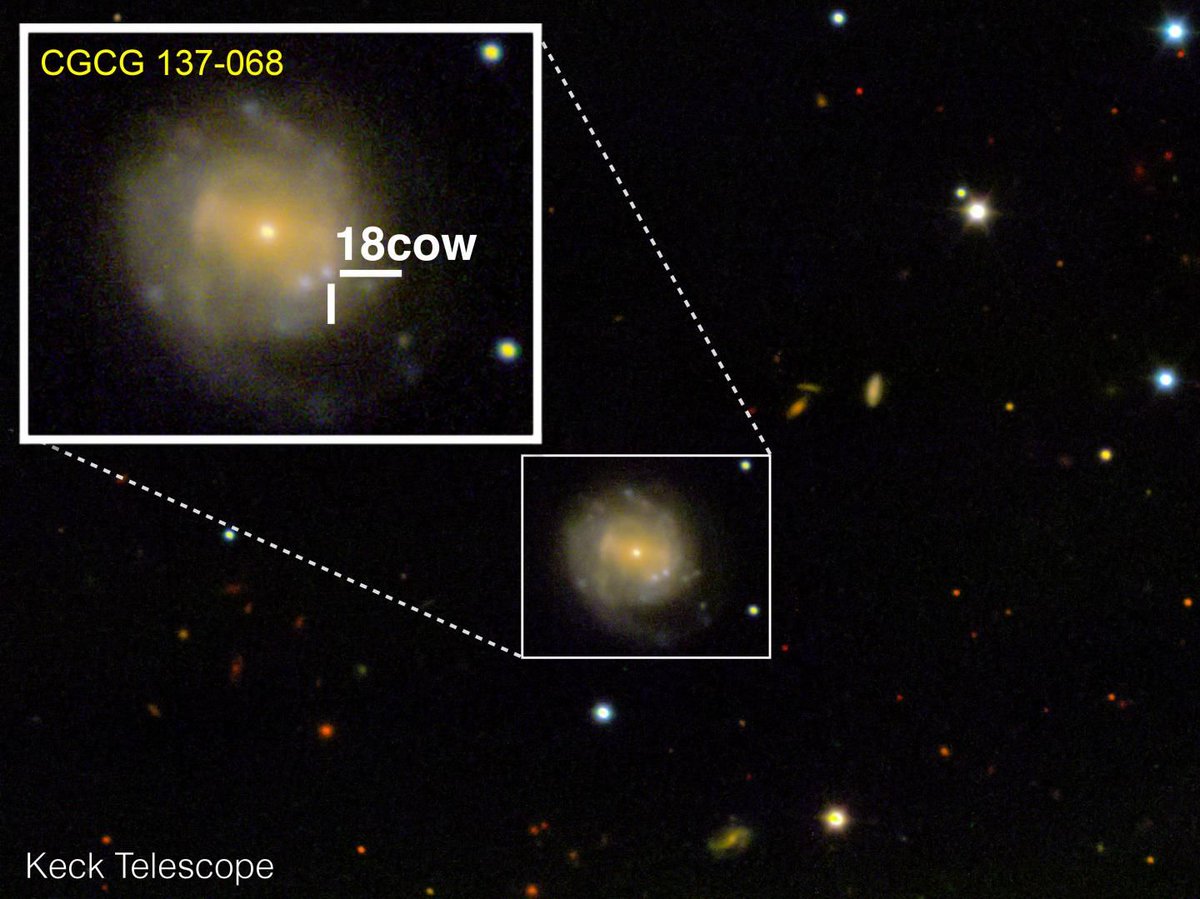
On June 17th 2018, the ATLAS (Asteroid Terrestrial-impact Last Alert System) survey’s twin telescopes spotted something extraordinarily bright in the sky. The source was 200 million light years away in the constellation Hercules. The object was given the name AT2018cow or “The Cow.” The Cow flared up quickly, and then just as quickly it was gone.
What was it?
Continue reading “Astronomers See the Exact Moment a Supernova Turned into a Black Hole (or Neutron Star)”A Guide to Hunting Zombie Stars
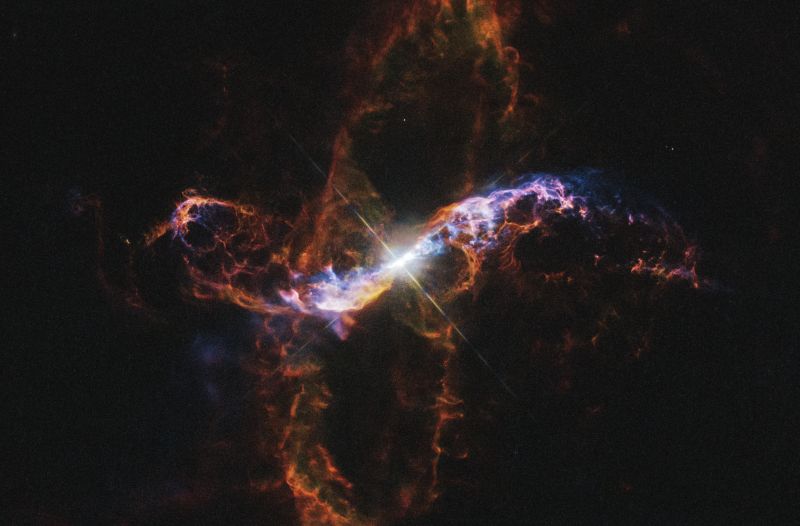
Apparently not all supernovas work. And when they fail, they leave behind a half-chewed remnant, still burning from leftover heat but otherwise lifeless: a zombie star. Astronomers aren’t sure how many of these should-be-dead creatures lurk in the interstellar depths, but with recent simulations scientists are making a list of their telltale signatures so that future surveys can potentially track them down.
A Supernova 2.6 Million Years Ago Could Have Wiped Out the Ocean’s Large Animals
For many years, scientists have been studying how supernovae could affect life on Earth. Supernovae are extremely powerful events, and depending on how close they are to Earth, they could have consequences ranging from the cataclysmic to the inconsequential. But now, the scientists behind a new paper say they have specific evidence linking one or more supernova to an extinction event 2.6 million years ago.
About 2.6 million years ago, one or more supernovae exploded about 50 parsecs, or about 160 light years, away from Earth. At that same time, there was also an extinction event on Earth, called the Pliocene marine megafauna extinction. Up to a third of the large marine species on Earth were wiped out at the time, most of them living in shallow coastal waters.
“This time, it’s different. We have evidence of nearby events at a specific time.” – Dr. Adrian Melott, University of Kansas.
Continue reading “A Supernova 2.6 Million Years Ago Could Have Wiped Out the Ocean’s Large Animals”
Massive Triple Star System Creates this Bizarre Swirling Pinwheel of Dust. And it Could be the Site of a Gamma Ray Burst
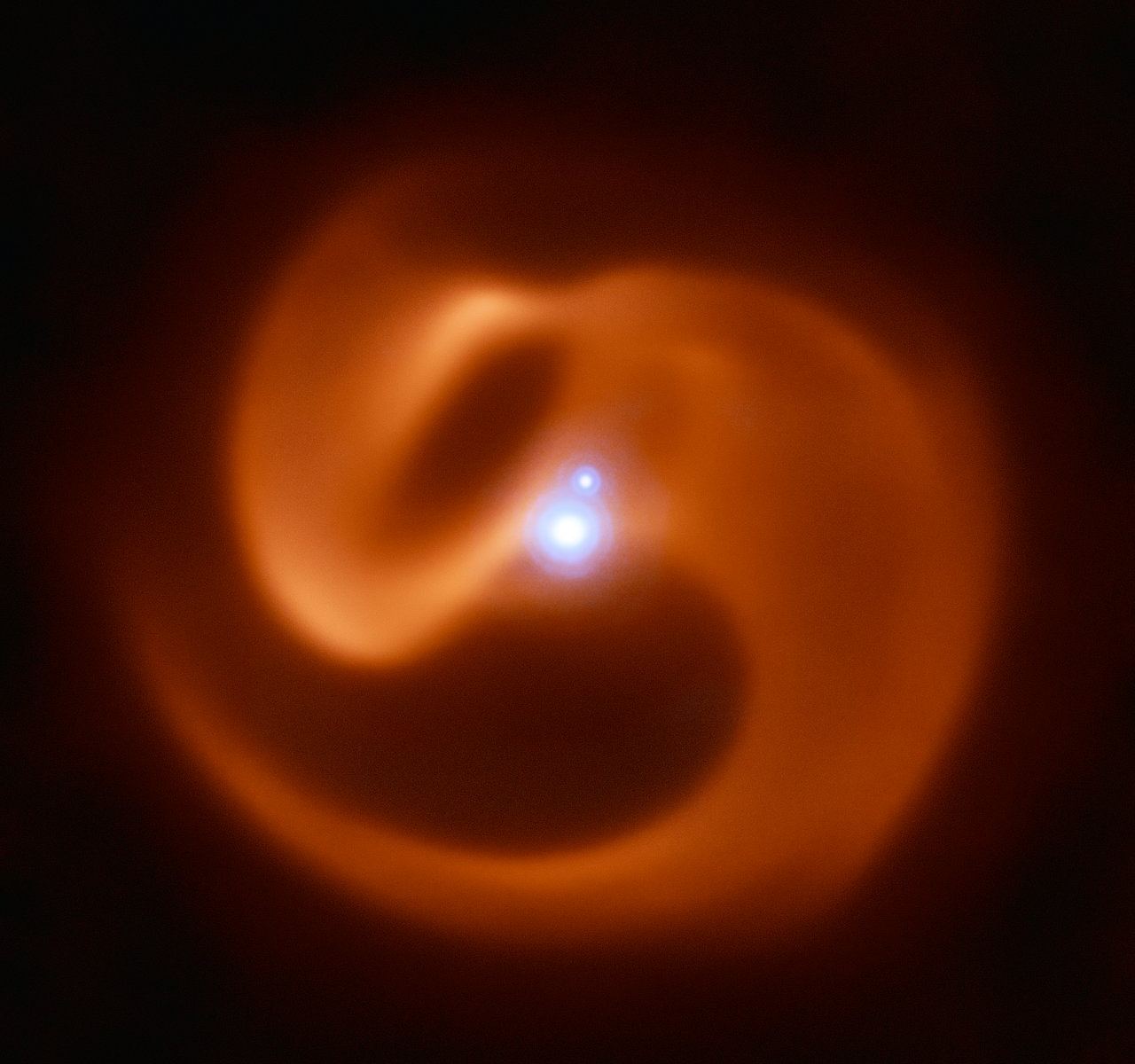
When stars reach the end of their lifespan, many undergo gravitational collapse and explode into a supernova, In some cases, they collapse to become black holes and release a tremendous amount of energy in a short amount of time. These are what is known as gamma-ray bursts (GRBs), and they are one of the most powerful events in the known Universe.
Recently, an international team of astronomers was able to capture an image of a newly-discovered triple star system surrounded by a “pinwheel” of dust. This system, nicknamed “Apep”, is located roughly 8,000 light years from Earth and destined to become a long-duration GRB. In addition, it is the first of its kind to be discovered in our galaxy.
A Star Exploded as a Supernova and Then Collapsed Into a Neutron Star. But Only a Fraction of its Matter was Released
For almost a century, astronomers have been studying supernovae with great interest. These miraculous events are what take place when a star enters the final phase of its lifespan and collapses, or is stripped by a companion star of its outer layers to the point where it undergoes core collapse. In both cases, this event usually leads to a massive release of material a few times the mass of our Sun.
However, an international team of scientists recently witnessed a supernova that was a surprisingly faint and brief. Their observations indicate that the supernova was caused by an unseen companion, likely a neutron star that stripped its companion of material, causing it to collapse and go supernova. This is therefore the first time that scientists have witnessed the birth of a compact neutron star binary system.
170 Years Ago, Eta Carinae Erupted Dramatically. Astronomers Now Think They Know Why

Eta Carinae, a double star system located 7,500 light years away in the constellation Carina, has a combined luminosity of more than 5 million Suns – making it one of the brightest stars in the Milky Way galaxy. But 170 years ago, between 1837 and 1858, this star erupted in what appeared to be a massive supernova, temporarily making it the second brightest star in the sky.
Strangely, this blast was not enough to obliterate the star system, which left astronomers wondering what could account for the massive eruption. Thanks to new data, which was the result of some “forensic astronomy” (where leftover light from the explosion was examined after it reflected off of interstellar dust) a team of astronomers now think they have an explanation for what happened.
The studies which describe their findings – titled “Exceptionally fast ejecta seen in light echoes of Eta Carinae’s Great Eruption” and “Light echoes from the plateau in Eta Carinae’s Great Eruption reveal a two-stage shock-powered event” – recently appeared in the Monthly Notices of the Royal Astronomical Society.
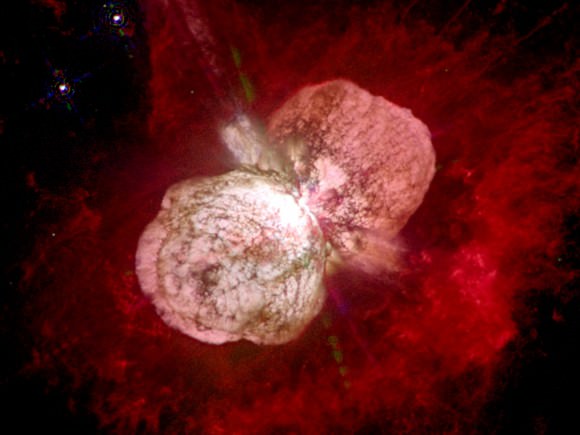
Both studies were led by Nathan Smith of the University of Arizona’s Steward Observatory, and included members from the
In their first study, the team indicates how they studied the “light echoes” produced by the explosion, which were reflected off of interstellar dust and are just now visible from Earth. From this, they observed that the eruption resulted in material expanding at speeds that were up to 20 times faster than with any previously-observed supernova.
In the second study, the team studied the evolution of the echo’s light curve, which revealed that it experienced spikes before 1845, then plateaued until 1858 before steadily declining over the next decade. Basically, the observed velocities and light curve were consistent with the blast wave of a supernova explosion rather than the relatively slow and gentle winds expected from massive stars before they die.
The light echoes were first detected in images obtained in 2003 by telescopes at the Cerro Tololo Inter-American Observatory in Chile. For the sake of their study, the team consulted spectroscopic data from the Magellan telescopes at the Las Campanas Observatory and the Gemini South Observatory, both located in Chile. This allowed the team to measure the light and determine the ejecta’s expansion speeds – more than 32 million km/h (20 million mph).
Based on this data, the team hypothesized that the eruption may have been triggered by a prolonged battle between three stars, which destroyed one star and left the other two in a binary system. This battle may have culminated with a violent explosion when Eta Carinae devoured one of its two companions, sending more than 10 Solar masses into space. This ejected mass created the gigantic bipolar nebula (aka. “the Homunculus Nebula”) which is seen today.
As Smith explained in a recent HubbleSite press release:
“We see these really high velocities in a star that seems to have had a powerful explosion, but somehow the star survived. The easiest way to do this is with a shock wave that exits the star and accelerates material to very high speeds.”
In this scenario, Eta Carinae started out as a trinary system, with two massive stars orbiting close to each other and the third orbiting further away. When the most massive of the binary neared the end of its life, it began to expand and then transfer much of its material onto its slightly smaller companion. This caused the smaller star to accumulate just enough energy to cause it to eject its outer layers, but not enough to completely annihilate it.
The companion star would have then grown to become about 100 times the mass of our Sun and extremely bright. The other star, now weighing only 30 Solar masses, would have been stripped of its hydrogen layers, exposing its hot helium core – which represent an advanced stage of evolution in the lives of massive stars. As Armin Rest – a researcher from the explained:
“From stellar evolution, there’s a pretty firm understanding that more massive stars live their lives more quickly and less massive stars have longer lifetimes. So the hot companion star seems to be further along in its evolution, even though it is now a much less massive star than the one it is orbiting. That doesn’t make sense without a transfer of mass.”
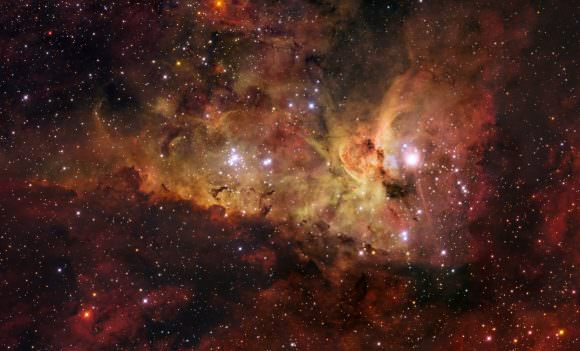
This transfer of mass would have altered the gravitational balance of the system, causing the helium-core star to move farther away from its now-massive companion and eventually travel so far that it would interact with the outermost third star. This would cause the third star to move towards the massive star and eventually merge with it, producing an outflow of material.
Initially, the merger caused ejecta that expanded relatively slowly, but as the two stars finally joined together, they produced an explosive event that blasted material off 100 times faster. This material caught up to the slow ejecta, pushing it forward and heating the material until it glowed. This glowing material was the main light source that was viewed by astronomers 170 years ago.
In the end, the smaller helium-core star settled into an elliptical orbit around around its massive counterpart, passing through the star’s outer layers every 5.5 years and generating X-ray shock waves. According to Smith, while this explanation cannot account for everything observed in Eta Carinae, it does explain both the brightening and the fact that the star remains:
“The reason why we suggest that members of a crazy triple system interact with each other is because this is the best explanation for how the present-day companion quickly lost its outer layers before its more massive sibling.”
These studies have provided new clues as to the mystery of how Eta Carinae appeared to explode in a massive supernova, but left behind a massive star and nebula. In addition, a better understanding of the physics behind the Eta Carinae explosion could help astronomers to learn more about the complicated interactions that govern binary and multiple star systems – which are critical to our understanding of the evolution and death of massive stars.
Further Reading: HubbleSite, MNRAS, MNRAS (2)




